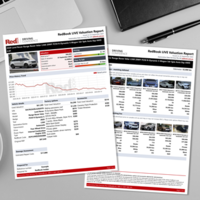The RedBook Insider: NVES Potential Impact on Residuals
Arguably the most hot-button discussion at present amongst the industry is the proposed introduction of a New Vehicle Efficiency Standard (NVES) in Australia.
With the NVES on the horizon, it is timely to revisit how Government policy can have drastic effects on any automotive market. We don’t have to look afar to see what chaos ensued with the rapid implementation and subsequent removal of the Clean Car Discount Scheme in New Zealand. Globally there are many examples of Government policy having both intended consequences but also many unintended consequences as well. There are always many market forces in play and in a volatile automotive market. As such, Australia, with its vast brand representation makes for a true hot pot when a scheme such as NVES comes to market abruptly. What will the impact of the proposed NVES have on new cars? In particular availability and affordability, both of which have a direct connection to the used market.
Whilst less than a month has passed since what must have felt like a “bombshell” for many in the automotive industry, RedBook have been giving active consideration as to what this might mean for the used market and future residuals.
With proposed NVES limits and projected timelines for implementation commencing as early as January 2025, modelling the “preferred” option that will see a penalty of $100 per g/km applied, reveals some alarming figures if you take the view that the Federal Chamber of Automotive Industries (FCAI) has.

It is not hard to notice that Australians are infatuated with SUVs & Light Commercial Vehicles (LCV). They accounted for nearly 80% of last year’s new vehicle deliveries. Whilst the proposed scheme allows for emission offsetting and trading within and between brands/OEMs, Australia’s vehicle car parc currently suggests that there simply aren’t enough green cars to offset against. While yes, the NVES is designed to push OEMs to bring more efficient vehicles to market, which is a good thing for all, realistically how fast can this occur?
The NVES could very much play into the hands of recent market entrants, namely Chinese brands that have established footprints with greener emissions profiles, versus market stalwarts that have built reputation, following and share around model mixes that cant pivot as quickly. It’s this latter crop that has the FCAI arguing vigorously.
In the short term, it leaves little question as to how long-established OEMs in our market might account for the potential imposed penalties.
Considering a short 2-year outlook, the limited options on offer include:
1. to absorb
2. pass on to customers, or
3. withdraw the model/variant.
One could argue that is unlikely the penalties will be applied in full effect, though let’s assume they are. The most likely scenario in the near 2026 outlook, is a combination of the first two which leads us to how this will impact the used market now and into the future.
Assuming the FCAI’s position on NVES is how it will play out, there are strong indicators that point towards elevated future used car values in the short term as OEMs adapt market strategies.
These used car premiums may manifest off the back of:
1. Price Relativity – Maintaining the price relationship between new and used when new cars go up in price to cover the NVES penalty.
2. Used Vehicle Preferences – History and other markets have demonstrated an increase in demand for certain types of vehicles will eventuate as a result of higher new prices and or market withdrawals. RedBook anticipate this will be particularly prevalent amongst large SUV & LCVs categories as their remains and will continue to, a huge demand for these types of vehicles in the Australian market.
3. Limited ZLEV options – With fewer hybrid or Electric LCV options in market and coming in the near term, demand for those that are coming could be artificially inflated.
The following chart provides some insight into what we might experience as the impact of the NVES penalty essentially acts as a used market premium.

RedBook like many in the industry eagerly await the findings of the public and industry consultation period that closed this week. It does however feel like we may see but another example of where government policy can have much wider reach than intended. The possible result of this is a series of compromises, as we’re all too aware of what getting this wrong spells for an in-term government’s popularity let alone the used market.
A few things are certain, there are strong opposing forces at play, and a medium must be found for the betterment of the industry.
Recent Posts
-
 The RedBook Insider: Emerging Divergence in the Popular 4x4 Ute Segment: Heavy-Duty Performance vs Hybrid-Electric Innovation30th September 2025
The RedBook Insider: Emerging Divergence in the Popular 4x4 Ute Segment: Heavy-Duty Performance vs Hybrid-Electric Innovation30th September 2025 -
 The RedBook Insider: Introducing RedBook LIVE: Smarter, Faster, and More Accurate Automotive Intelligence30th September 2025
The RedBook Insider: Introducing RedBook LIVE: Smarter, Faster, and More Accurate Automotive Intelligence30th September 2025 -
 The RedBook Insider: Introducing the RedBook Insider Webinar Series30th September 2025
The RedBook Insider: Introducing the RedBook Insider Webinar Series30th September 2025
